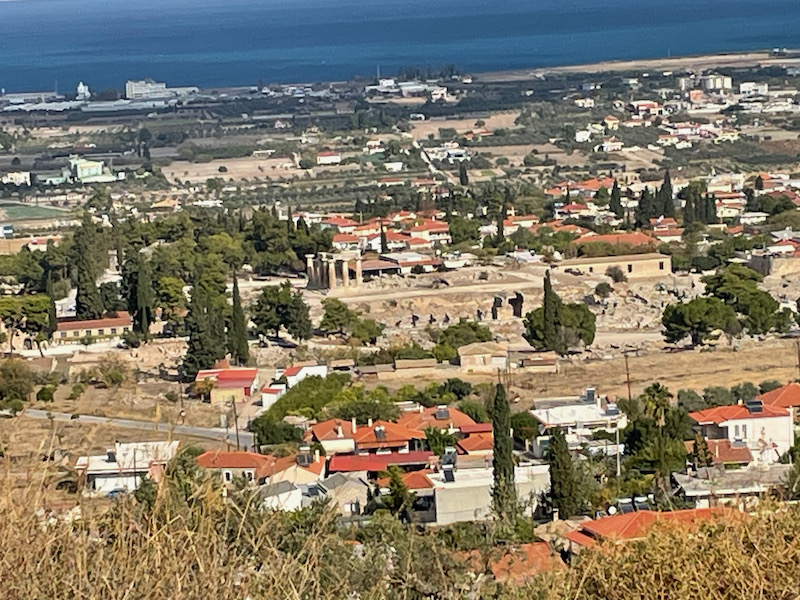Our Blog - Greece 2024 - Acrocorinth
Acrocorinth (meaning 'Upper Corinth') or the acropolis of ancient Corinth is a fortress on the top of a mountain above the ancient city of Corinth. With its secure water supply from a natural spring, the fortress was repeatedly used as a last line of defense in southern Greece because it commanded the Isthmus of Corinth, repelling foes from entry by land into the Peloponnese peninsula. It was continuously occupied from archaic times to the early 19th century. After the Greeks, it was used by the Byzantine Empire, the Venetians, and the Ottoman Turks.
The parking lot is about halfway up the mountain, and here you can see the path leading up to one of the gates. Although things normally look quite flat in pictures, I attempted to give you some idea of how far up it is and how far down the water below is.
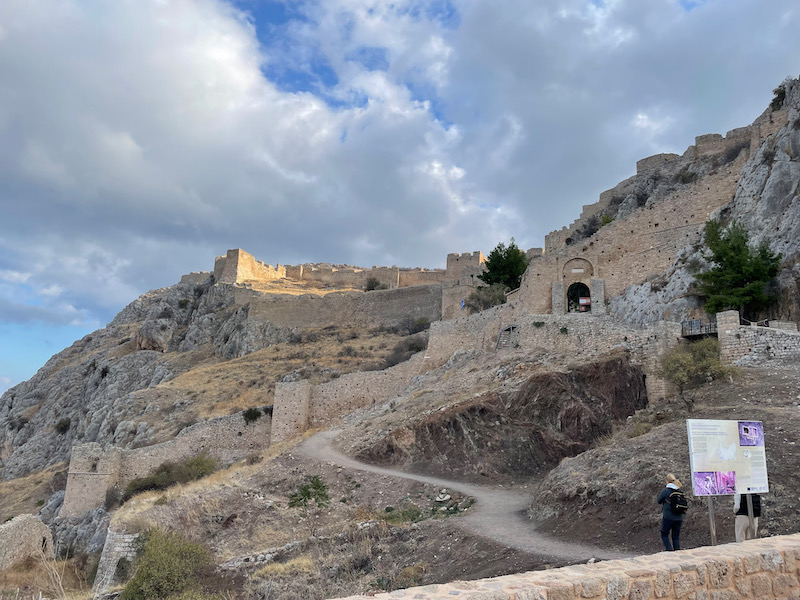
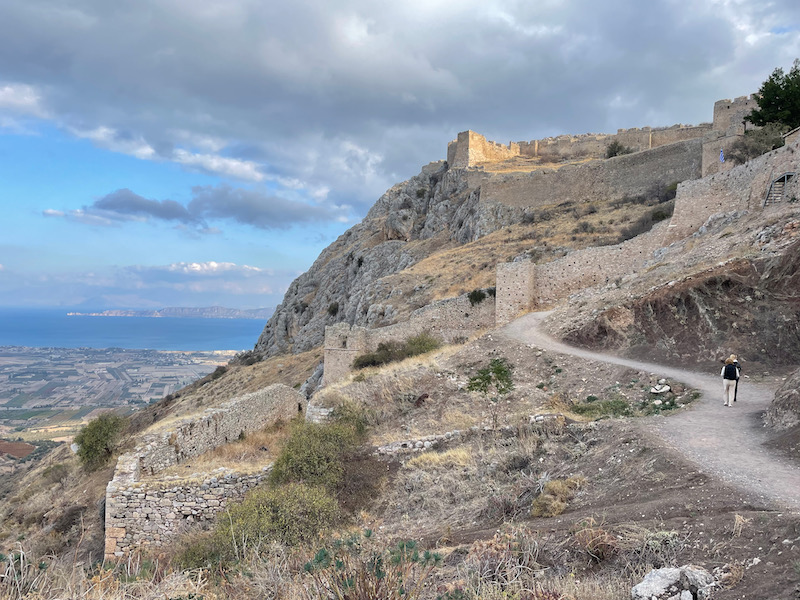
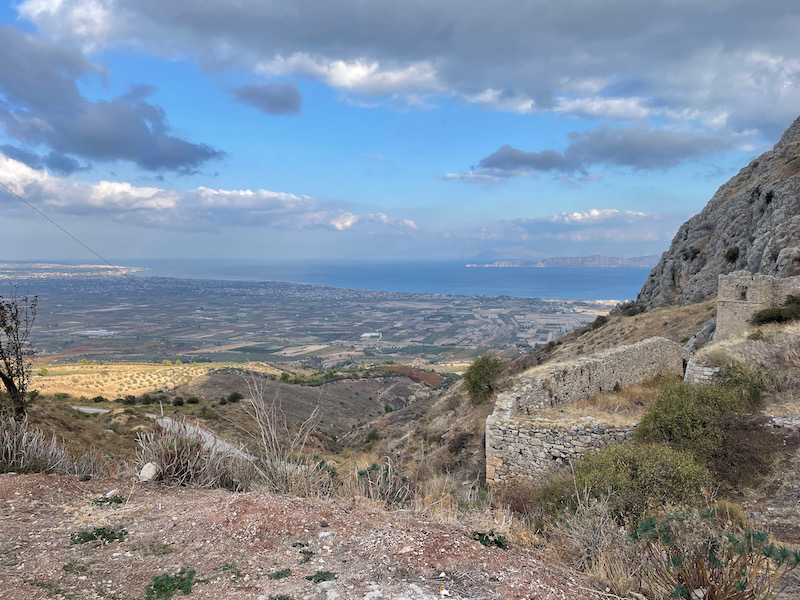
I have to admit here that this walk is not for the faint-of-heart. It was a relatively cool morning with a nice wind making a mess of my hair!
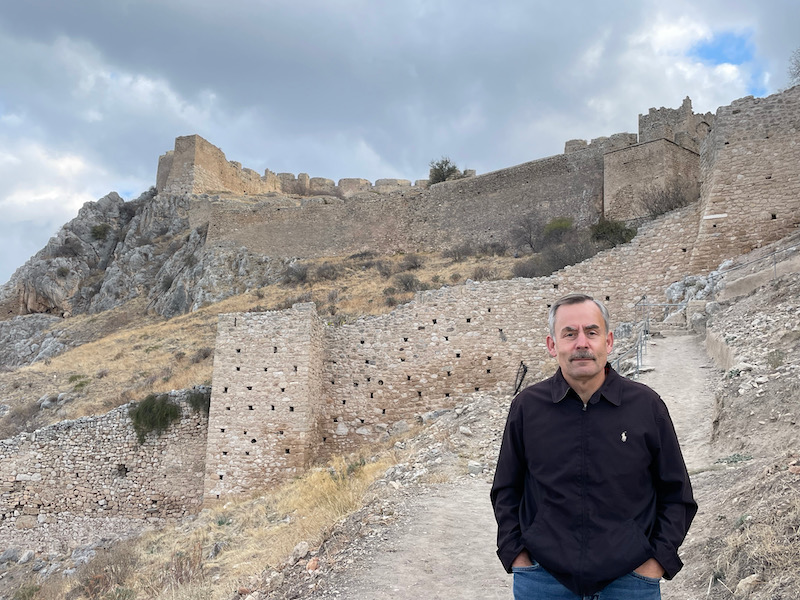
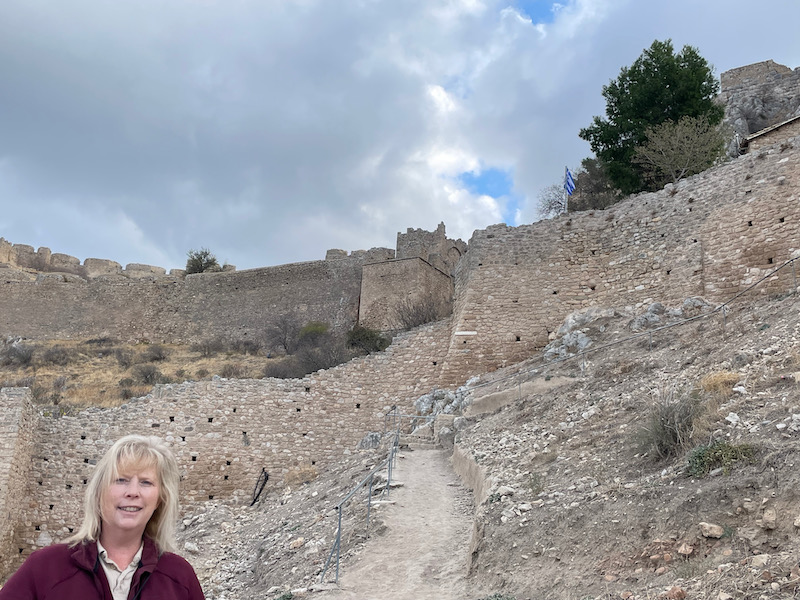
The fortress occupies the entire plateau of the steep hill, with 3 sets of fortification walls. The first fortification walls were built around 600 BC when Corinth was ruled by the tyrant Kypselos and his descendants. They were further strengthened in the 4th century BC although most of that was destroyed by the Roman army in 146 BC when the Green peninsula became part of the Roman Empire. In the 6th century AD, it started to flourish here again and the walls were rebuilt, and then additional building was done in the Middle Byzantine period (9th - 12th century). It was then annexed by the Frankish principality of Achaea before going back to the Byzantines around 1400. It then fell to the Ottoman Turks, who held it until 1823, when it was liberated.
Here we have Tom at the first defensive gate, and then you can see the long ramp up to the 2nd defensive gate. The video going around to show the 3rd (and final) set of defensive walls and the gate. As I swing around and look a bit higher, you can get a glimpse of the buildings at the top.
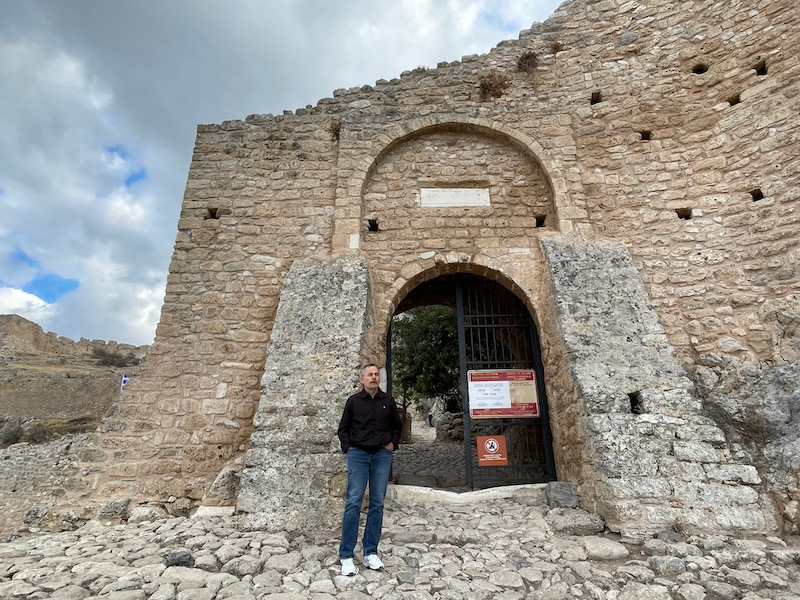
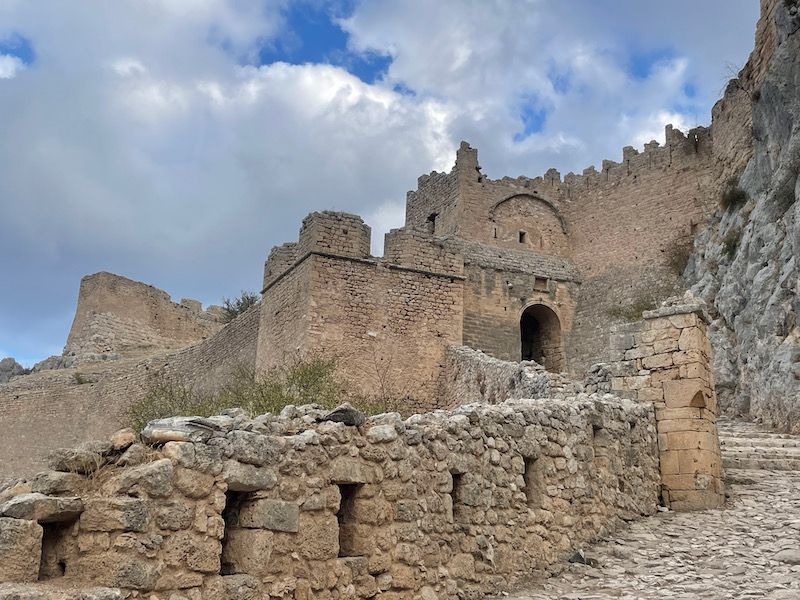
The third and final gate, featuring towers on each side of the gate. Parts of the wall and tower on the right date from the 4th century (you can see the larger stones) and then most of the gate and left side tower are from the 9th century.
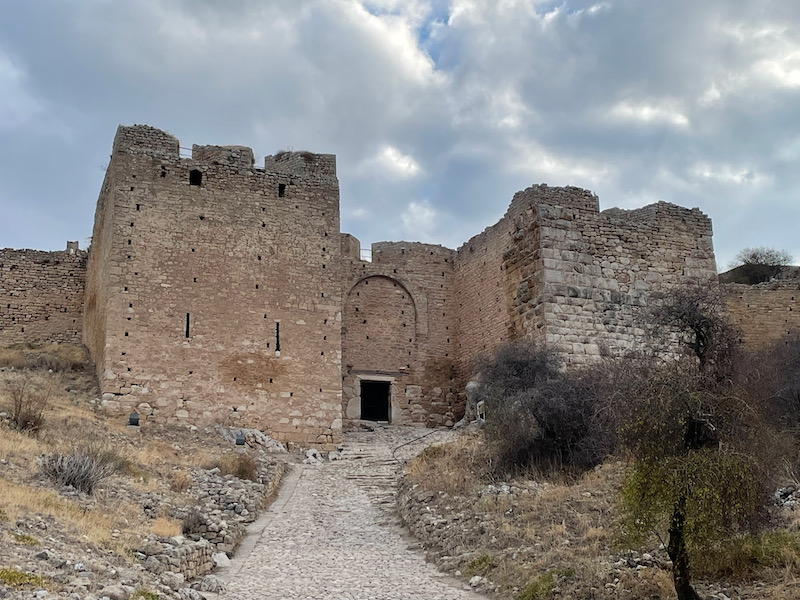
Just inside the gate are the remains of an Ottoman bath, built into the hillside.
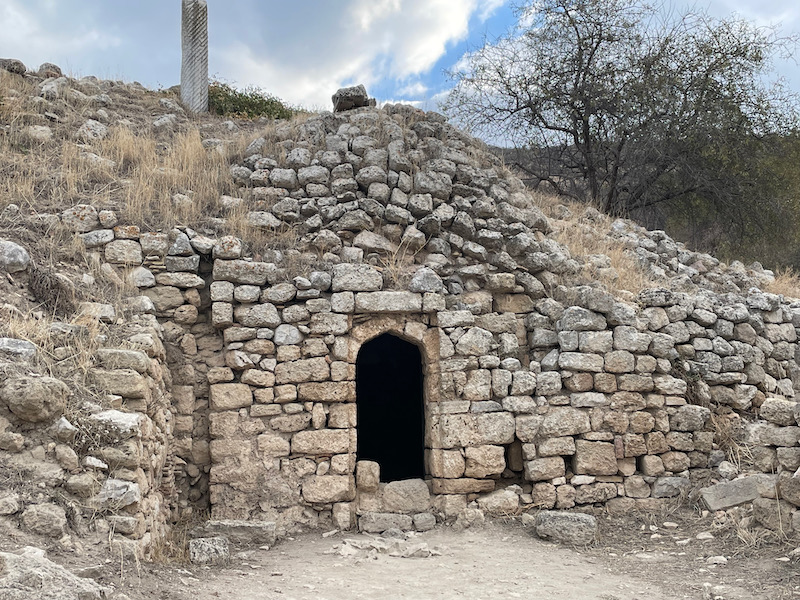
There is quite a bit inside the 3rd set of defensive walls. A few things have information about them, but a lot of what you can see are remnants which look interesting but I don't exactly know what each one was. In addition, there are random columns and blocks which were part of something but now just give an interesting impression.
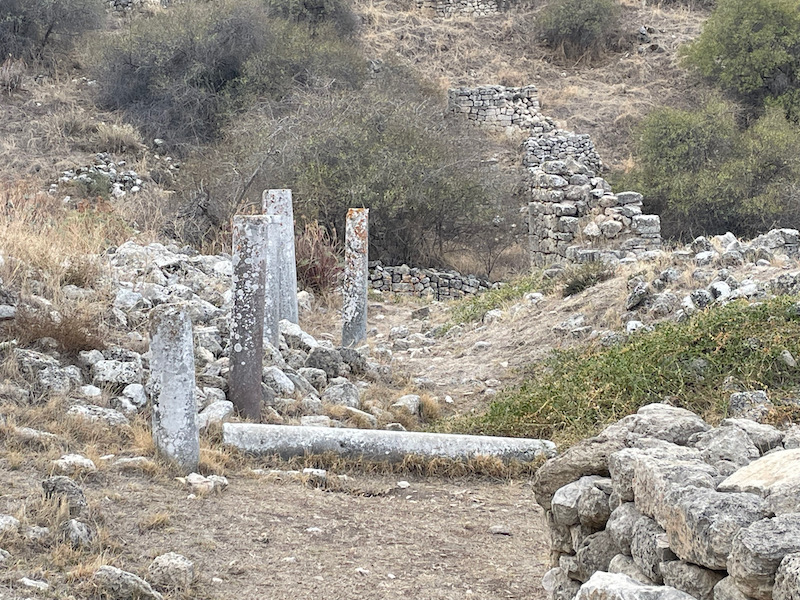
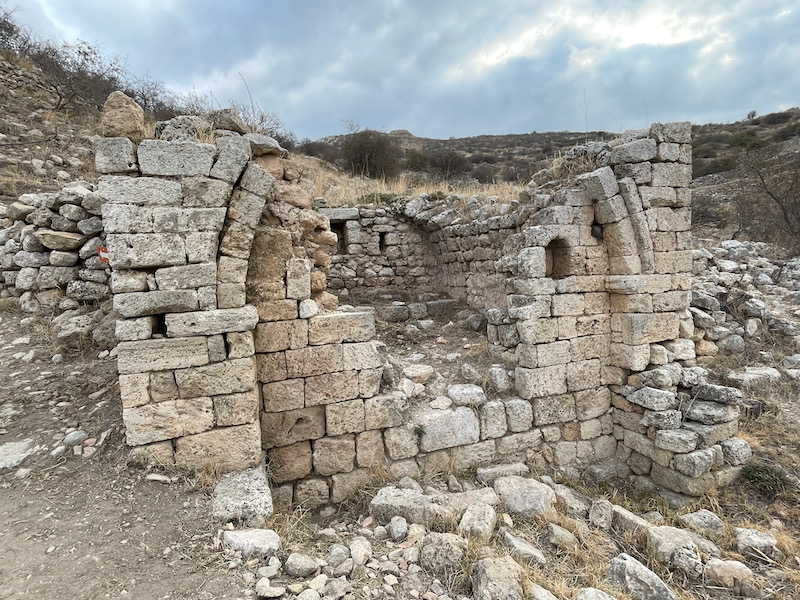
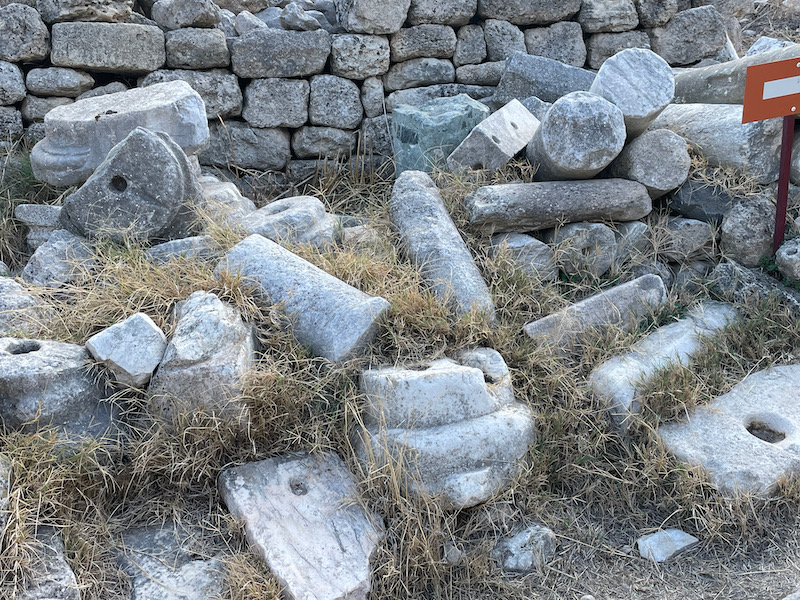
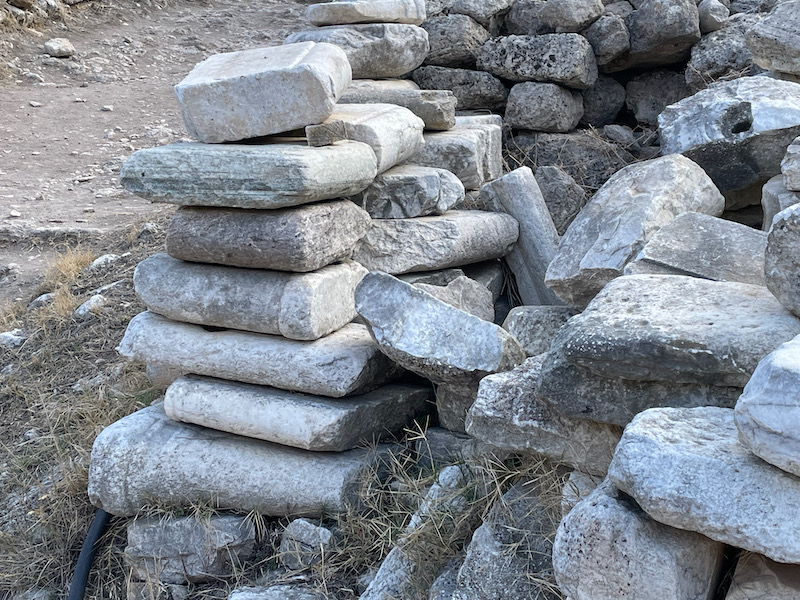
One building that looks to still be in use is the rebuilt Greek Orthodox Church of Saint Demetrios. It is a fairly small, single room church with a barrel vault. In addition to the very new-looking main altar area, the walls had what I assume are very old frescoes.
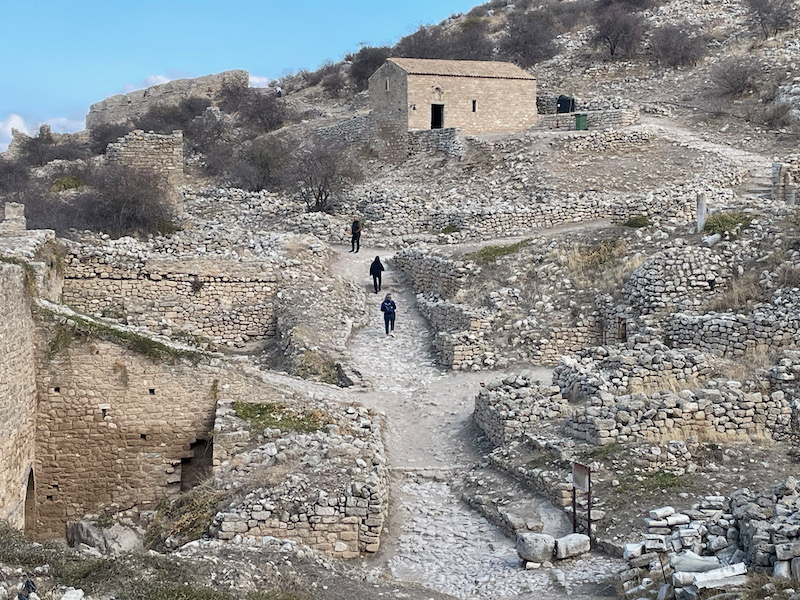
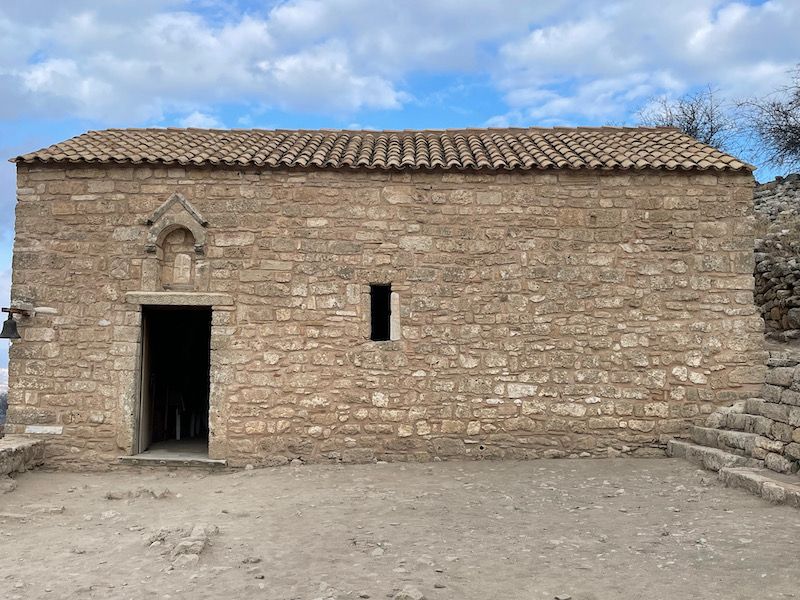
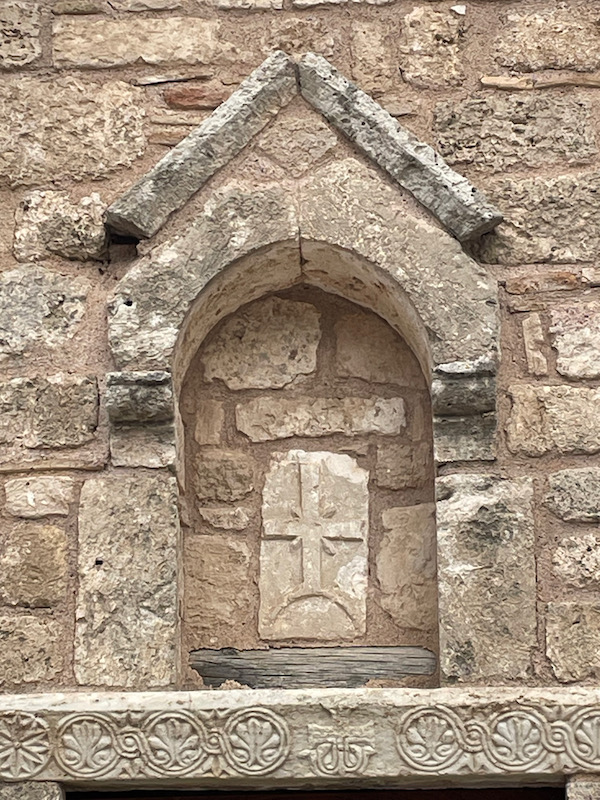
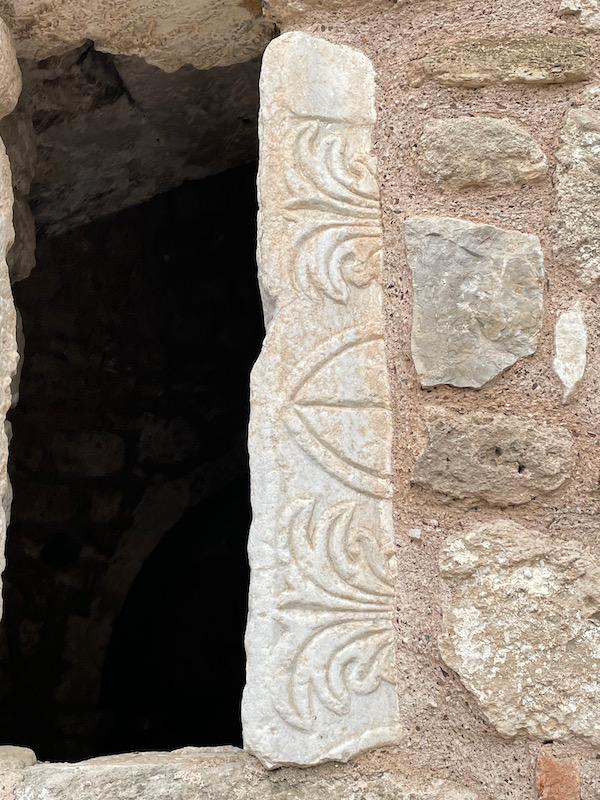
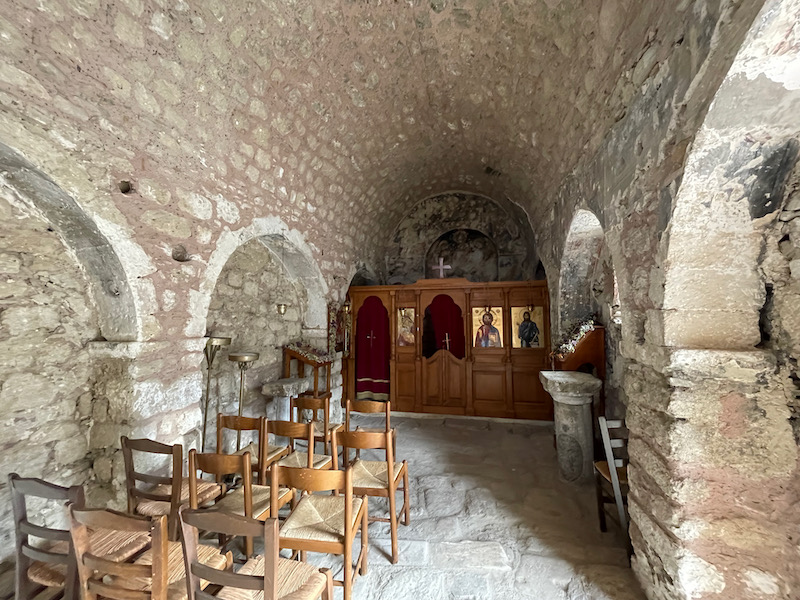
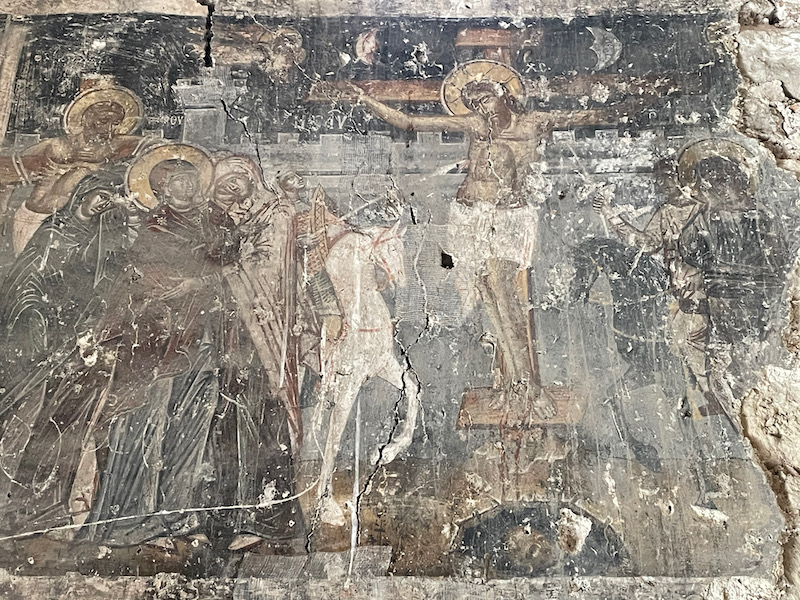
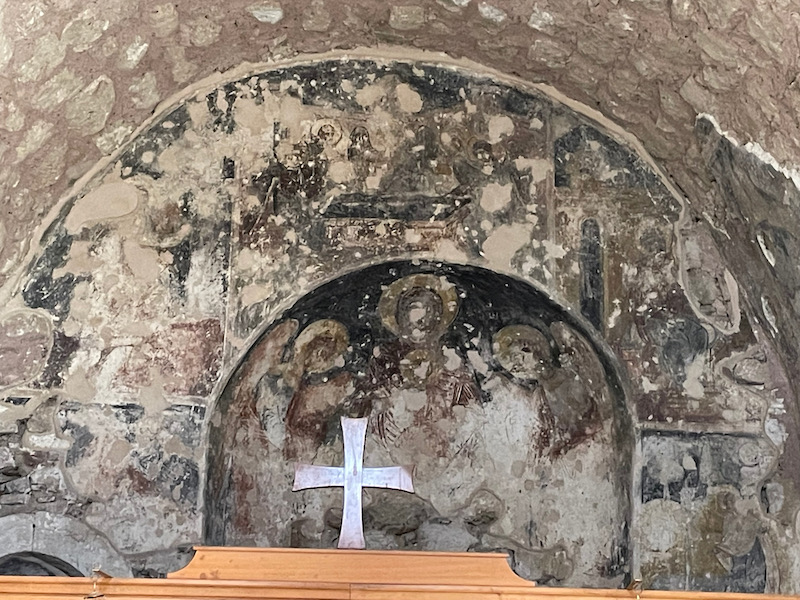
This is an old Mosque that was built here ... inside the walls was an entire town, with houses, shops, water cisterns, along with 3-4 mosques and 5-6 small churches (based on accounts from travelers in the 17th century). We weren't able to go inside, but only peek through the door.
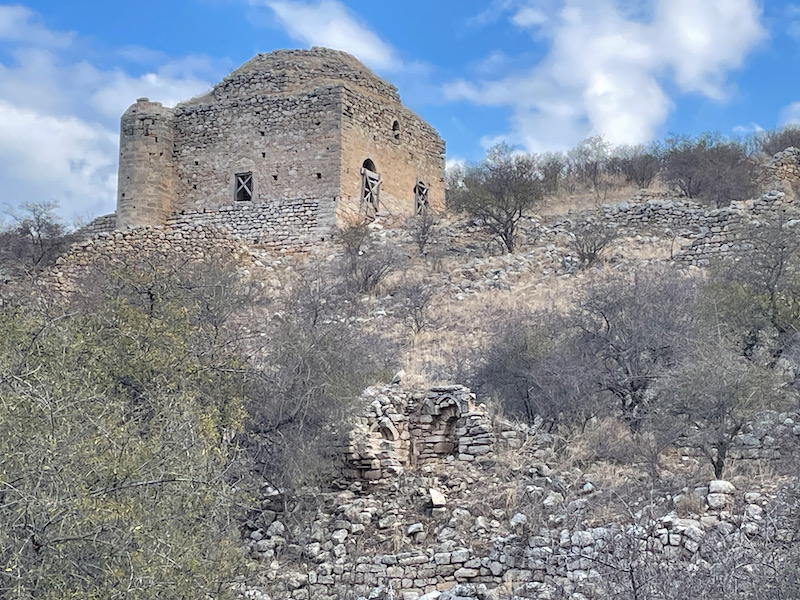
Now the outer battlements, with my little head popping out (more visible in the 2nd picture). If you look closely on the 1st picture, you can see how the wall continues up to the summit of the hill behind this part of the wall.
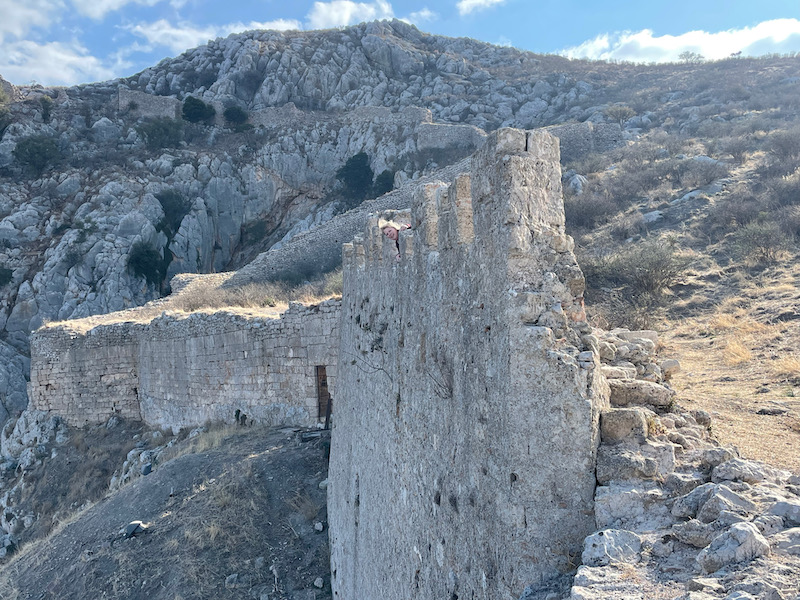
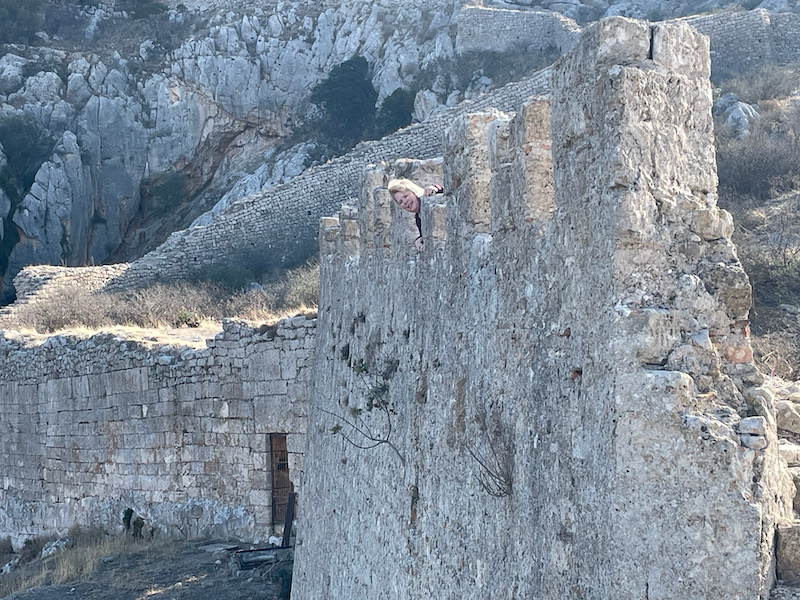
We didn't climb to the top, but there was a 4th century BC temple to Aphrodite which was turned into a Christian church in the 5th century AD, and then later into an Islamic sanctuary. From what I can learn from reading up on the topic, there isn't anything left up there to see other than stones along the ground. There are remains visible, however, of additional fortifications called the "Venetian Barracks", that were built when the Venetians took over the castle of Acrocorinth in 1687, an occupation that lasted 28 years until it was recaptured by the Ottomans.
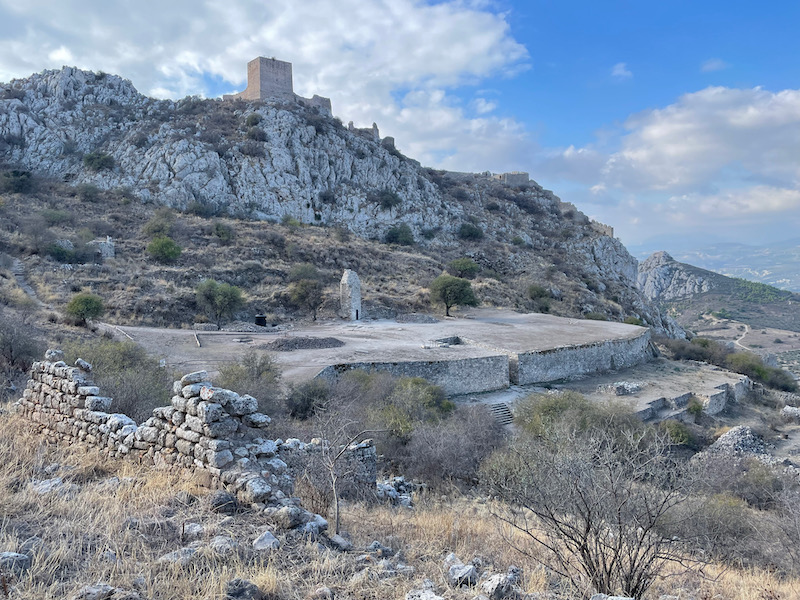
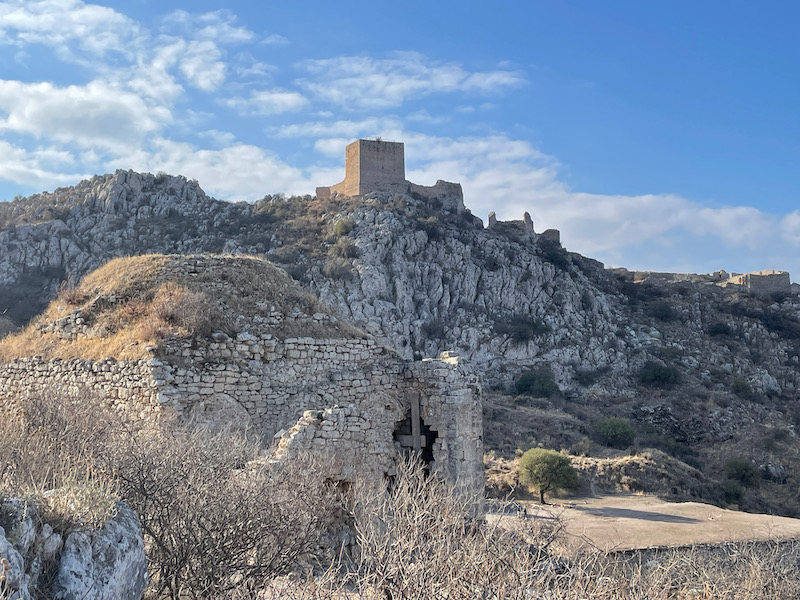
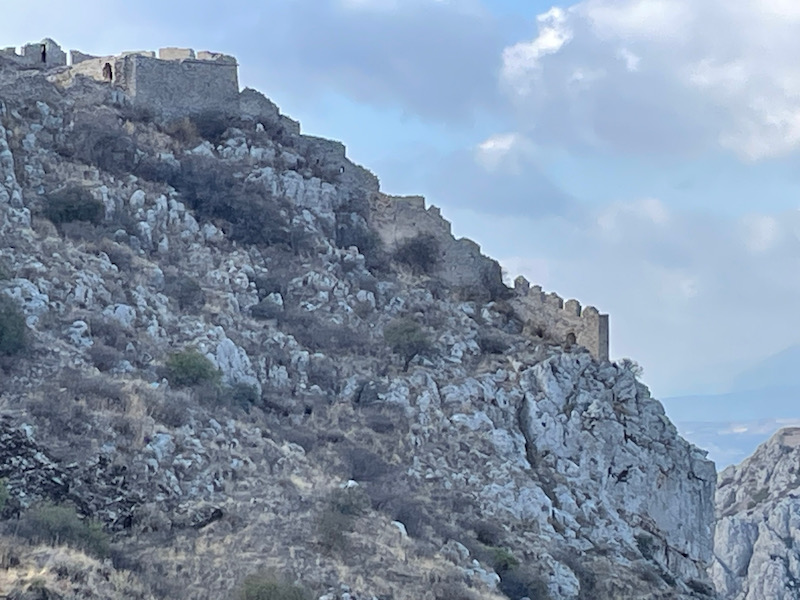
And a peek at what will come later ... from the fortress at the top of the mountain, you can look down on Ancient Corinth and the archeological area there, with the temple that you can see in the middle. We will get back to that just before heading into Athens for the last night.
